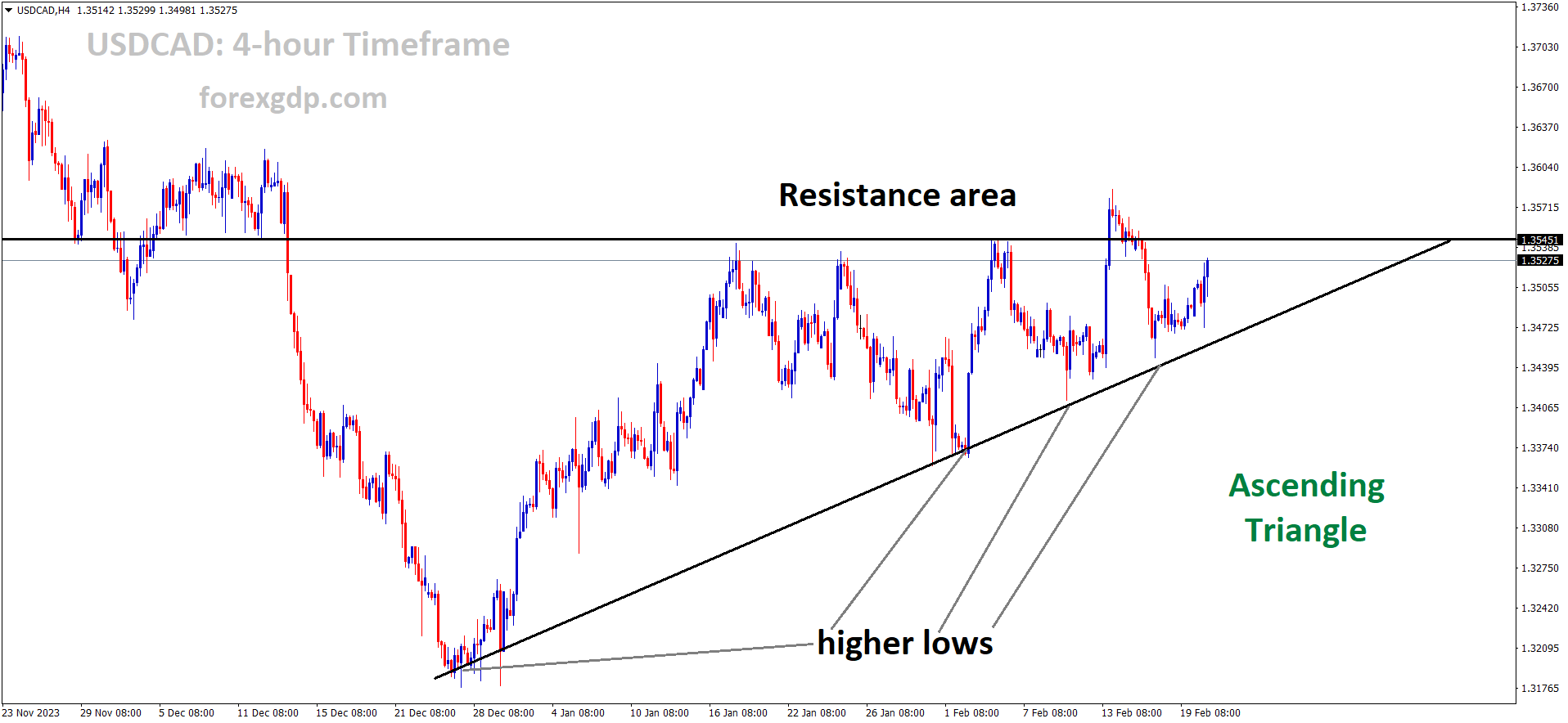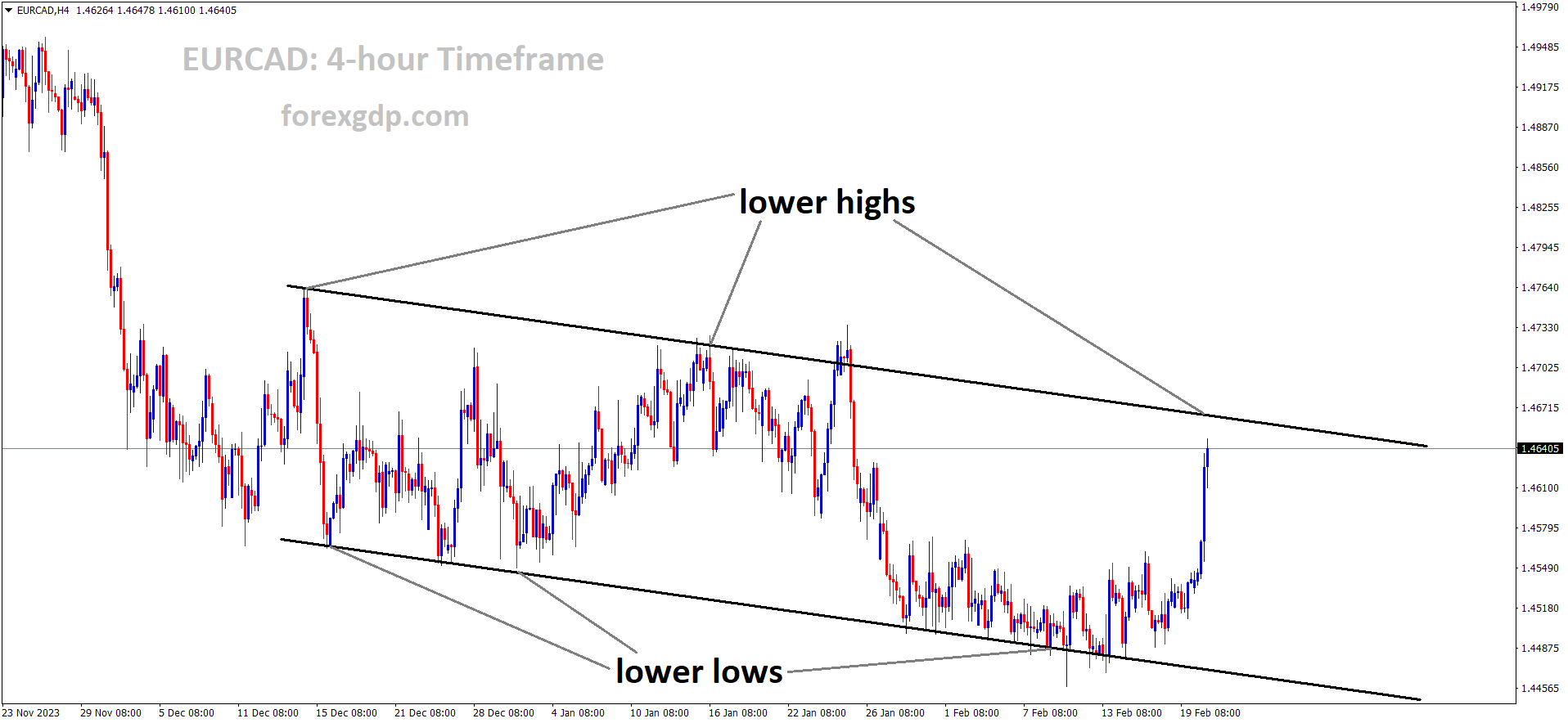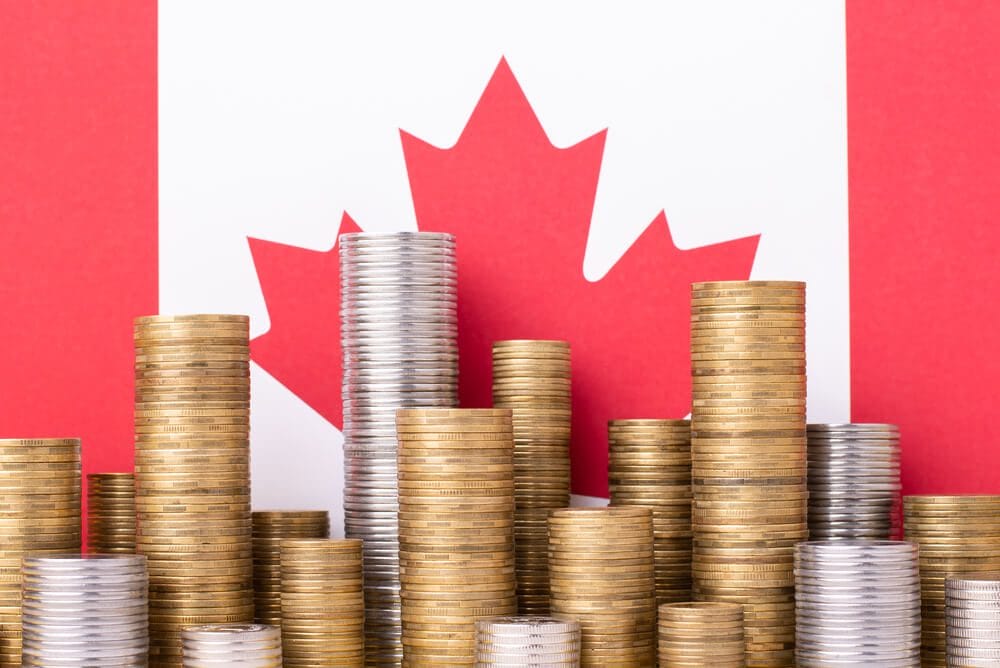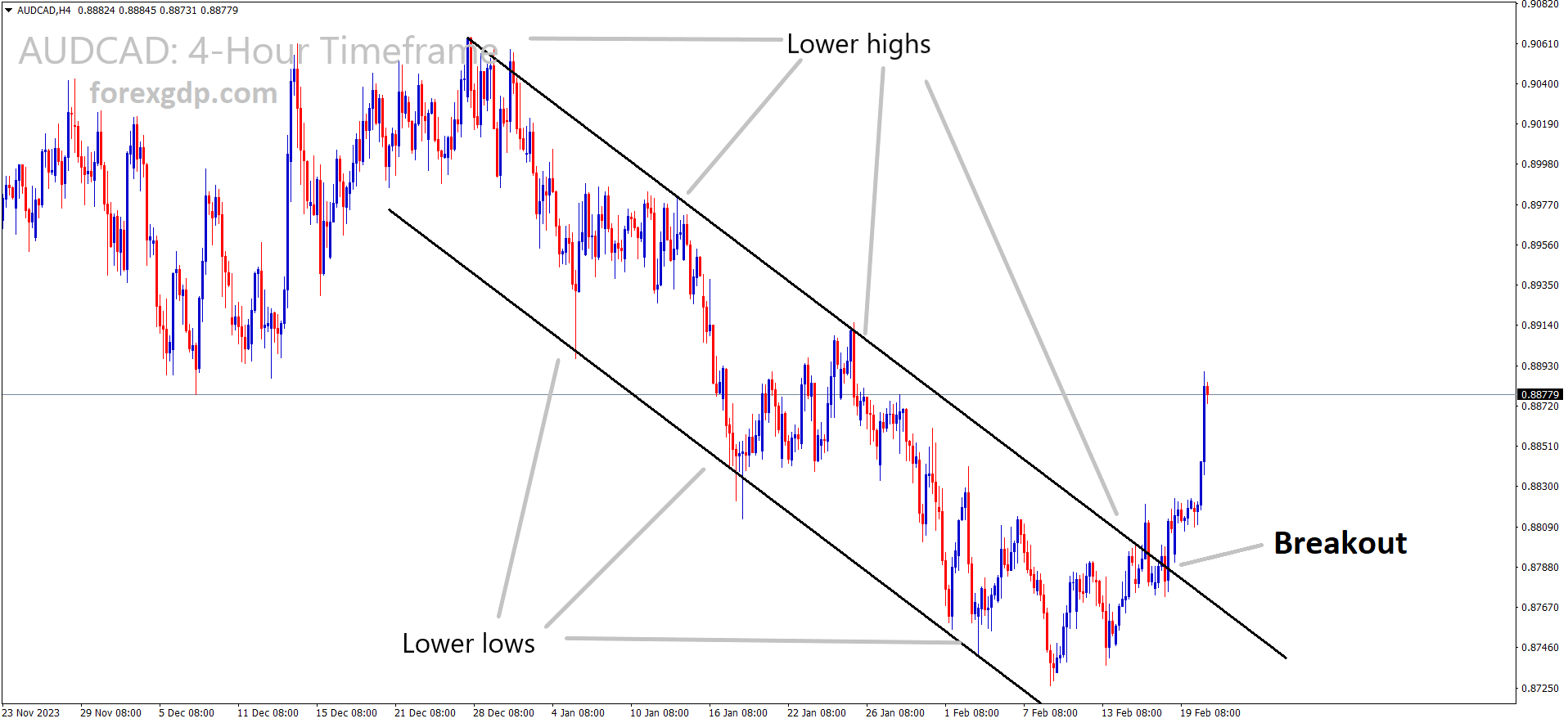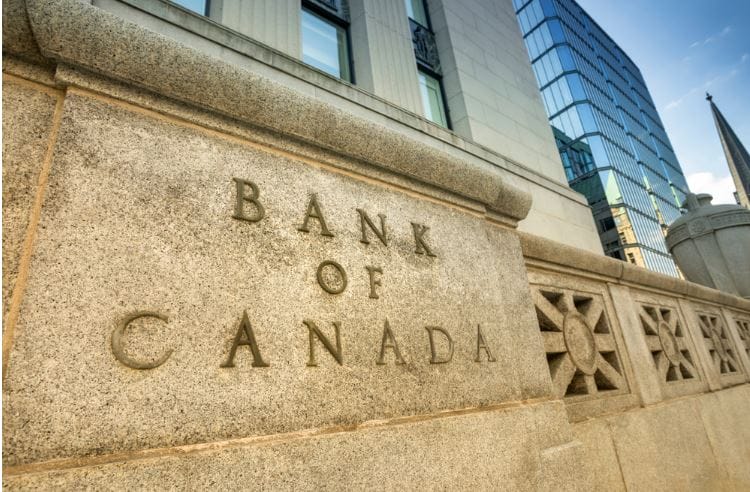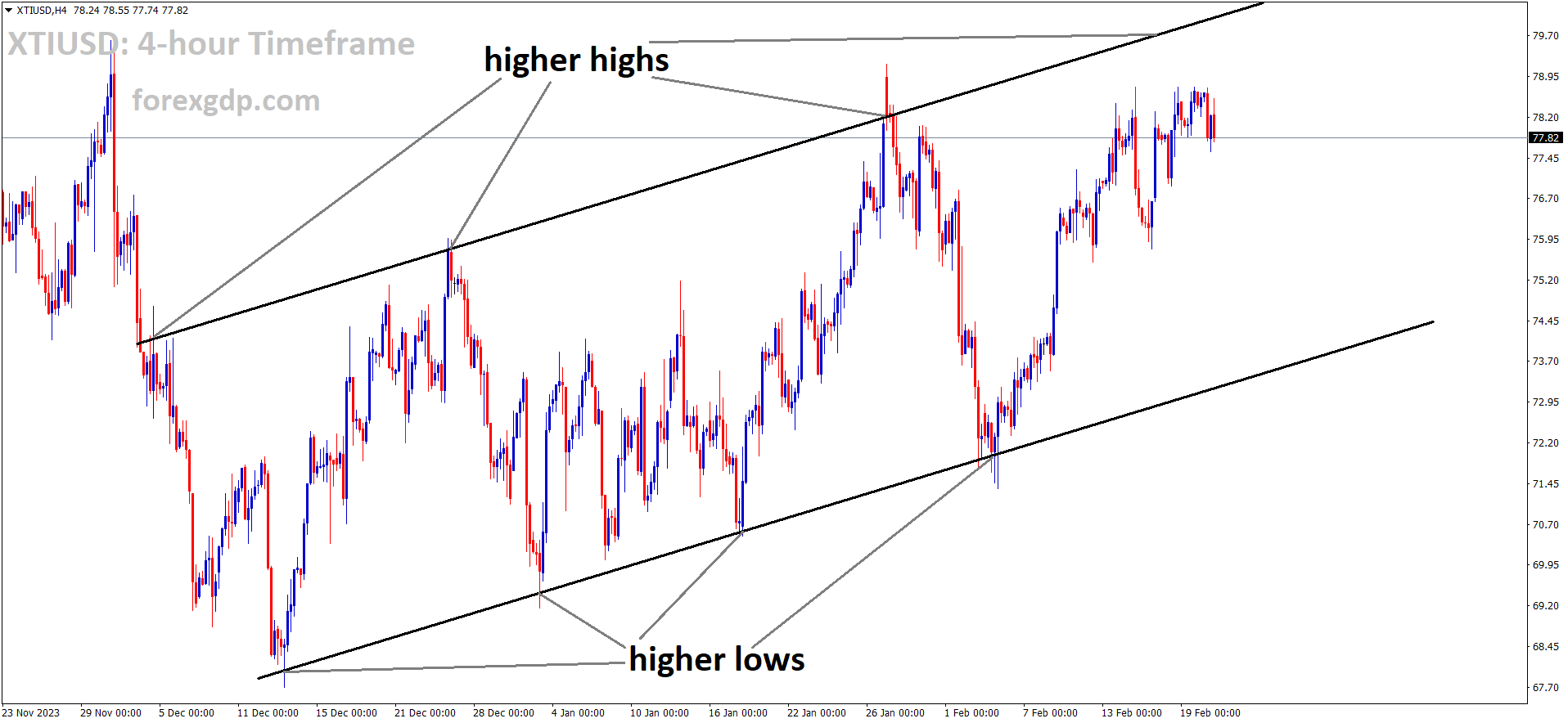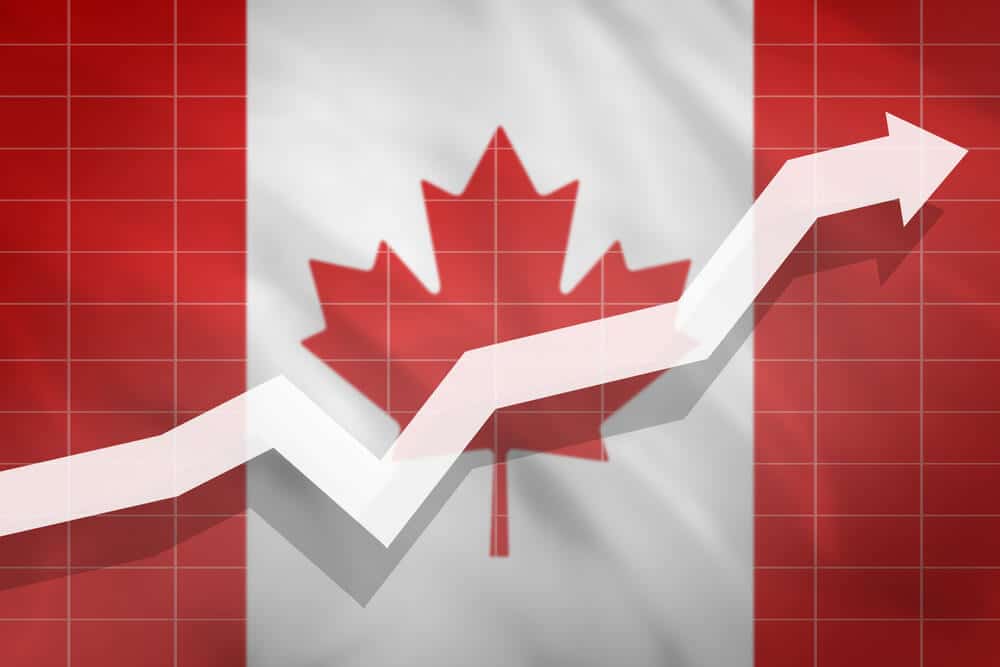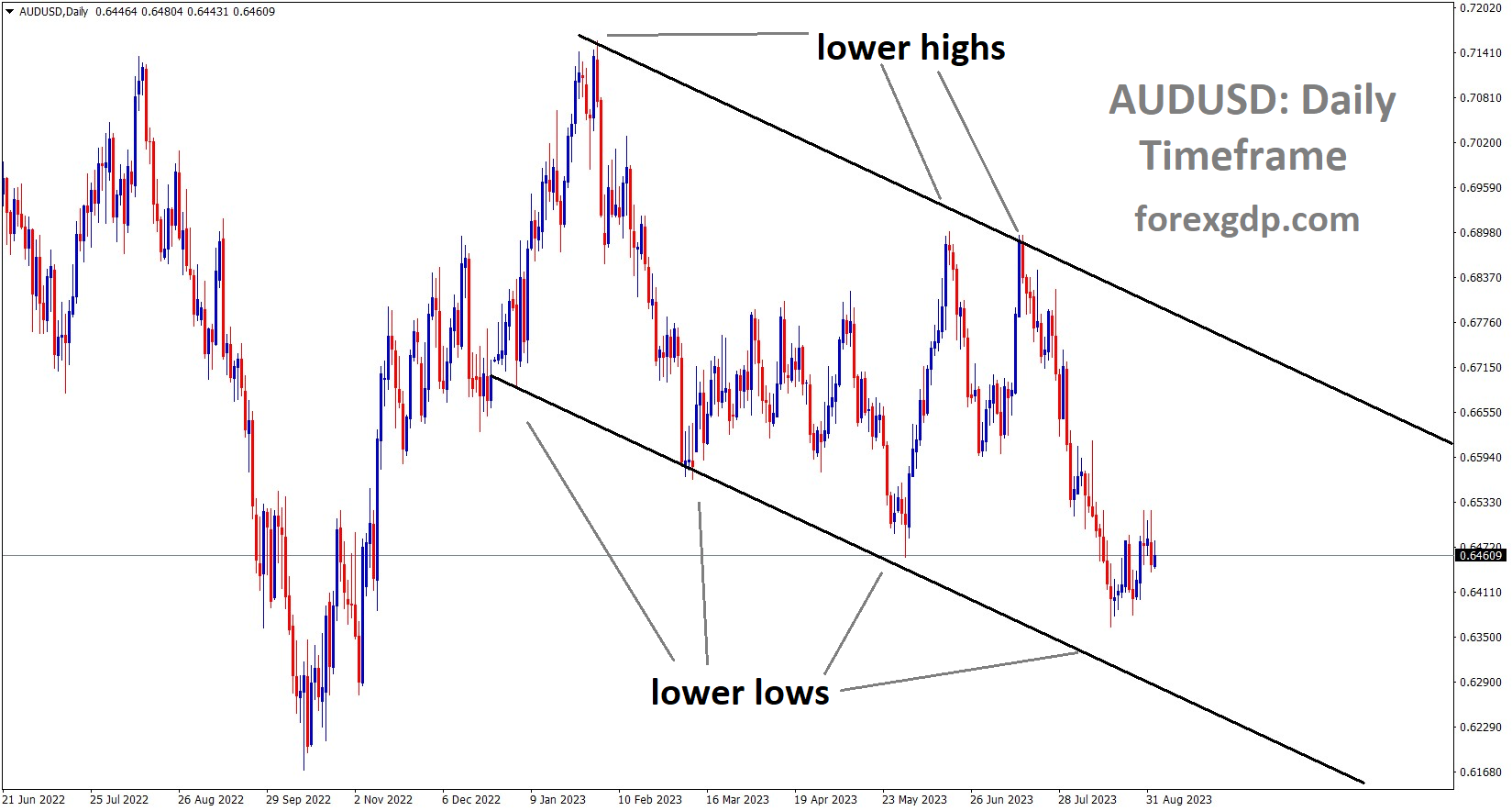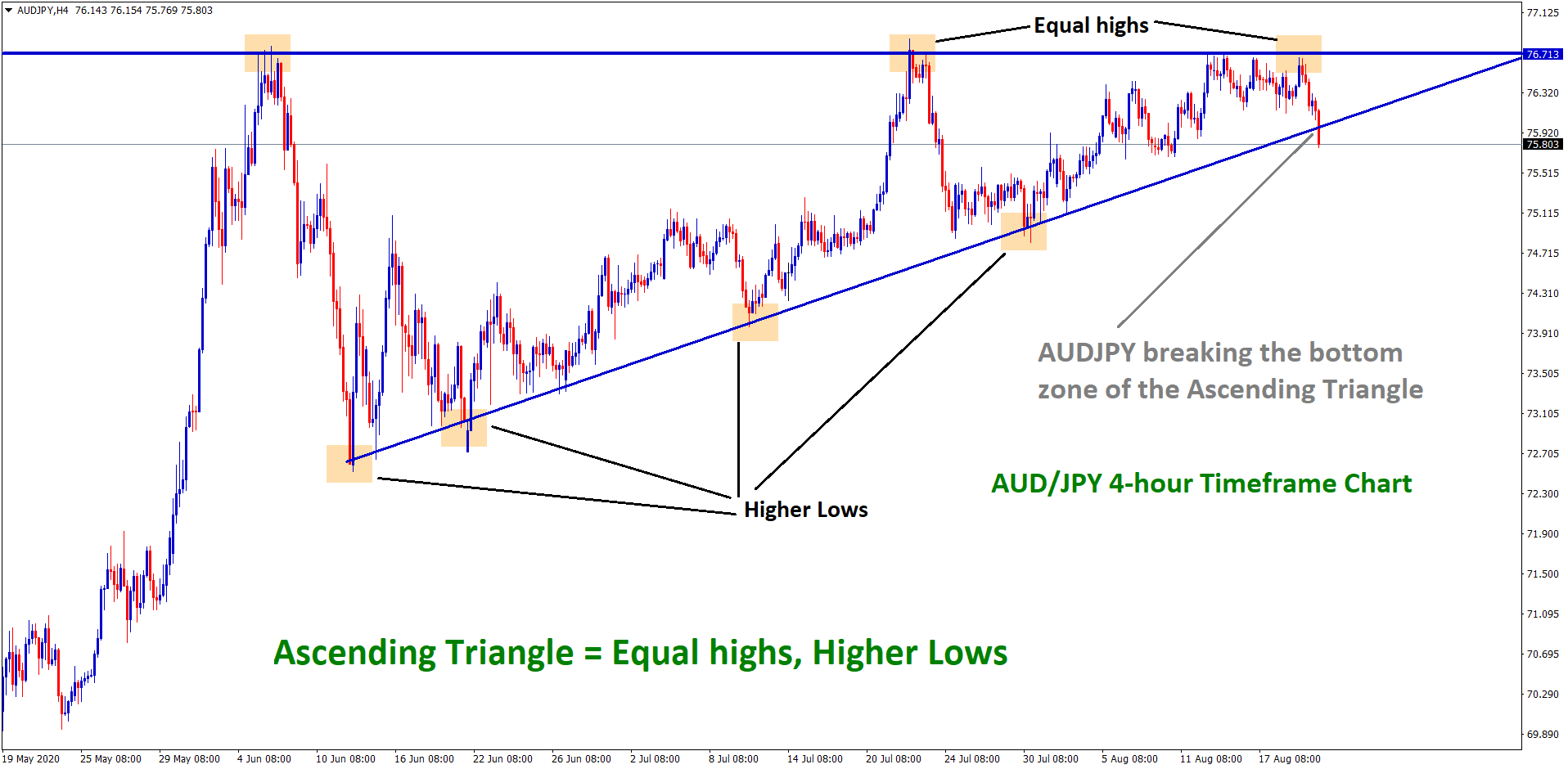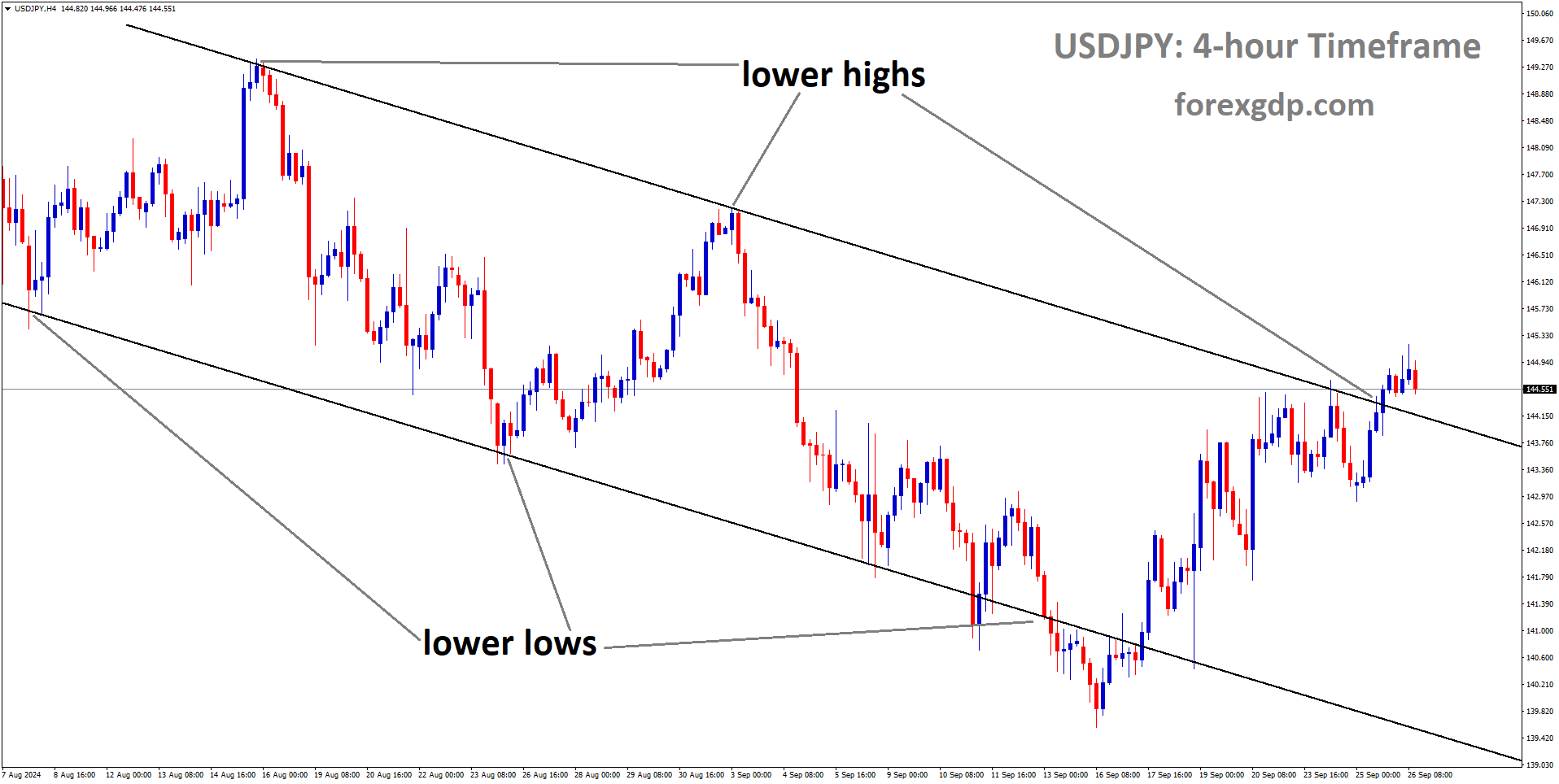Canada’s CPI Inflation Drops to 2.9%, Missing 3.3% Expectation
Canada Inflation rate for the month of January came at 2.9% it is lowered than expected data, 3.4% printed at last month. Gasoline prices slumped to -4.0% in January month due to Oil prices are higher in the international market. This data contributed to inflation to slow down at this rate. Canadian Dollar moved down after the data flashed.
USDCAD is moving in an Ascending triangle pattern and the market has rebounded from the higher low area of the pattern
In January, Canada’s yearly Consumer Price Index (CPI) inflation eased to 2.9% from December’s 3.4%, falling below the expected 3.3%, according to Statistics Canada. The monthly CPI remained unchanged, contrary to the anticipated 0.4% increase.
The annual Core CPI, excluding volatile food and energy prices, decreased to 2.4% from December’s 2.6%.
Statistics Canada attributed the headline deceleration to lower year-over-year gasoline prices in January (-4.0%), compared to December’s (+1.4%). Excluding gasoline, the headline CPI slowed to 3.2% year over year in January, down from the 3.5% growth in December.
Canada’s CPI Rises Slows to 2.9%
Canada Inflation rate for the month of January came at 2.9% it is lowered than expected data, 3.4% printed at last month. Gasoline prices slumped to -4.0% in January month due to Oil prices are higher in the international market. This data contributed to inflation to slow down at this rate. Canadian Dollar moved down after the data flashed.
Canada’s Annual Inflation Drops to 2.9% Following December’s Increase to 3.4%
Lower Gasoline Prices Main Factor in Decline: Statistics Canada
EURCAD is moving in the Descending channel and the market has reached the lower high area of the channel
The decline in the consumer price index is primarily attributed to lower year-over-year gasoline prices. Grocery price growth also slowed, increasing by 3.4% annually in January, down from 4.7% in December.
According to Statistics Canada, prices, when seasonally adjusted, saw a decrease between December and January, marking the first decline since May 2020.
The Bank of Canada’s preferred core measures of inflation, designed to exclude price volatility, also showed a decrease last month.
Canada’s January Inflation Rate Falls to 2.9%, Surpassing Expectations
Canada Inflation rate for the month of January came at 2.9% it is lowered than expected data, 3.4% printed at last month. Gasoline prices slumped to -4.0% in January month due to Oil prices are higher in the international market. This data contributed to inflation to slow down at this rate. Canadian Dollar moved down after the data flashed.
In January, Canada’s annual inflation rate unexpectedly dropped to 2.9%, driven largely by lower gasoline prices. Core inflation measures also reached their lowest levels in over two years, marking the first time since June last year that the consumer price index rise fell below 3%. Analysts surveyed by Reuters had predicted a slight decrease in inflation to 3.3% from December’s 3.4%.
AUDCAD has broken in Descending channel in upside
Month-over-month, the consumer price index remained unchanged, contrasting with the expected 0.4% rise. Two of the Bank of Canada’s (BoC) three core measures of underlying inflation also decreased. CPI-median slowed to 3.3%, the lowest since November 2021, while CPI-trim decreased to 3.4%, the lowest since July 2021. Although the central bank emphasizes that individual data points are insufficient to influence policy decisions, the decline in prices could hasten discussions about a potential rate cut.
The BoC forecasts headline inflation to hover around 3% in the first half of 2024, gradually cooling to 2.5% by year-end. In January, the BoC maintained its key overnight rate at 5%, emphasizing that while underlying inflation remains a concern, the focus is shifting towards determining the timing of potential borrowing cost reductions rather than contemplating further hikes. Before the January announcement, members of the bank’s policy-setting governing council expressed reservations about lowering borrowing costs prematurely, particularly due to the persistent impact of shelter prices on overall inflation.
In January, shelter price inflation, encompassing mortgage interest costs, rent, and components related to house prices, increased to 6.2%, up from 6% in December. Rents maintained upward momentum, accelerating to 7.9% in January from 7.7% in December.
Statistics Canada identified lower gasoline prices as the primary contributor to the headline deceleration in January, with a 4% decline on an annual basis. Month-over-month, gasoline prices fell by 0.9%, marking the fifth consecutive monthly decrease.
XTIUSD is moving in an Ascending channel and the market has reached the higher high area of the channel
The cost of store-bought food increased by 3.4%, marking the slowest pace since August 2021 and contributing to a downward impact on headline inflation. Excluding volatile food and energy, prices saw a 3.1% rise compared to the 3.4% increase in December.
The Bank’s upcoming rate announcement is scheduled for March 6, with expectations leaning towards maintaining the key policy rate at a 22-year high of 5%. The stronger-than-expected job gain in January and an early estimate of a rebound in GDP growth in the last quarter of 2023 have tempered expectations of rate cuts.
While money markets have increased their expectations for a rate cut, the first cut is still anticipated in July, with at least a 50 basis points decrease in 2024, down from 125 basis points in early January.
Don’t trade all the time, trade forex only at the confirmed trade setups.
Get more confirmed trade setups here: forexgdp.com/buy/


